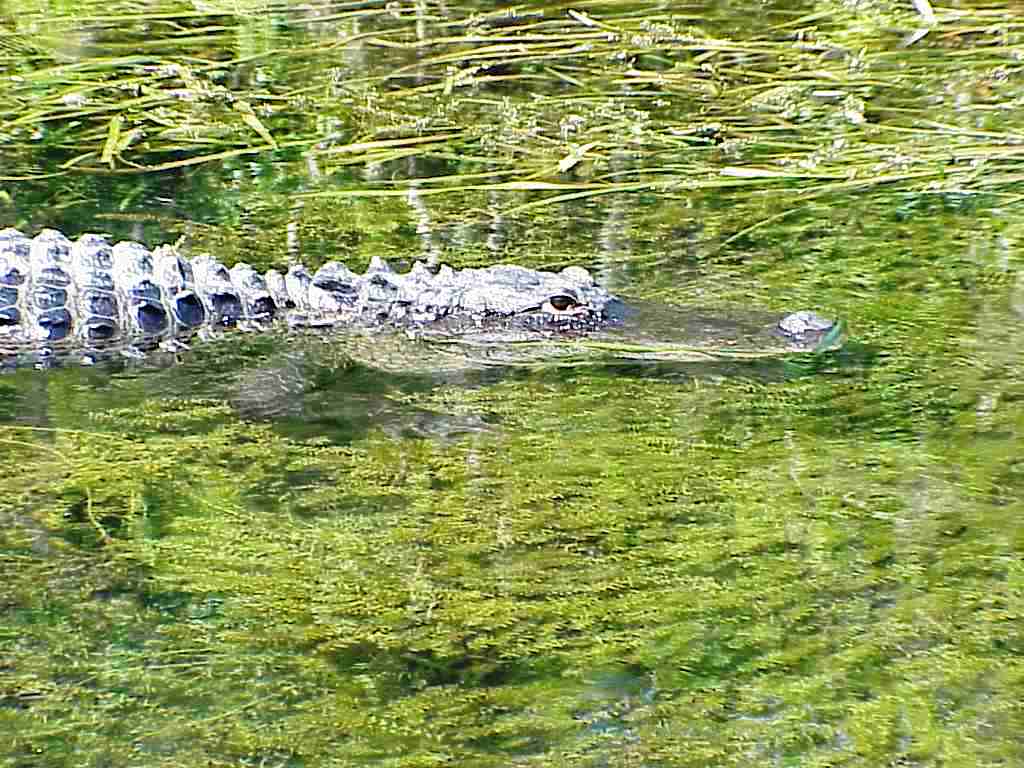
Florida’s has hundreds of types of aquatic plants and they are often an overlooked feature of Florida’s landscape. Photo by Jeff Schardt
Everywhere you look, plants are responding enthusiastically to Florida’s abundant rains, sunshine, and fertile soils; and this includes aquatic plants as well! Florida’s has hundreds of types of aquatic plants and they are often an overlooked feature of Florida’s landscape. Overlooked that is, until their lush growth interferes with our use of the water. This growth can sometimes become problematic in farm ponds, as it can quickly interfere with fishing, swimming, livestock watering, or irrigation. Farm ponds are abundant in Northwest Florida, and they are important in many aspects of agricultural production and rural life. For that reason, it is important to become knowledgeable about techniques to properly manage aquatic plants in ponds
As in any pest management effort, the first thing to do is identify the problem. There is a wealth of information available about aquatic plant management and identification at these websites, Aquatic Plant Identification Series, Aquatic and Wetland Plants in Florida, and your local UF/IFAS Extension County Agent.

Aquatic Plants have various growth habits like these submerged and emerged plants along the St. Marks River. Photo by Jess Van Dyke
There are hundreds of aquatic plant species growing in Florida’s water or in wetland areas. Their growth habits can generally be classified as those that are rooted and emergent, like cattails and rushes, those that are rooted and submerged, like eelgrass, or hydrilla, or those that float freely on the water surface, like duckweed or water lettuce. Aquatic plants are critical to the environment because they:
- provide habitat for fish and wildlife
- influence many water quality characteristics (oxygen levels, water clarity, etc)
- stabilize shorelines and sediments
- provide food (seeds and leaves) for waterfowl
Florida has both native and non-native aquatic plants, and most problem plants requiring control are non-native species, like hydrilla and water hyacinth. Millions of dollars are spent each year managing these and other invasive plants on Florida’s public waters. There are some native aquatic plants, however, like cattails, spike-rush, and southern naiad, which can, in smaller ponds, grow to levels requiring management.
Aquatic Herbicide Recommendations:
More than 60 biological, chemical, mechanical, and physical tools are available to manage aquatic plants in Florida waters, and managing aquatic plants is best accomplished by using an integrated pest management strategy. This strategy basically means using the appropriate management tools singly or in combination that:
- provide cost-effective control of the target plant
- conserve or enhance the uses and functions of the water body, including native plant and animal habitat; and
- are compatible with current conditions in the water body

Although labor intensive, mechanical harvesting is one of the tools used in an Integrated aquatic plant management program. Photo by Jess Van Dyke
If your integrated management plan includes the use of herbicides to control aquatic plants, you must be aware that only certain herbicides are registered by the U.S. Environmental Protection Agency and the Florida Department of Agriculture and Consumer Services for use in Florida’s waters. Only herbicides labeled for aquatic sites are legal to use in water. You’ve heard it before, but read the label before you purchase and apply any herbicide!
The following publication lists aquatic herbicides currently labelled for aquatic plant control and provides efficacy information on which types work best on our most common aquatic weeds: Southern Regional Aquaculture Center: Aquatic Weed Management: Herbicides

Integrated aquatic plant management works, as seen here at Wakulla Springs State Park. Photo by Jeff Schardt
If you have aquatic plant questions or problems, now is a great time to contact your County Extension office for identification and control information. Also, scout the pond and pond banks for non-native invasive plant species (your UF Extension Agent can help you identify them). These actions are all part of an integrated pest management approach which will result in cost efficient and effective aquatic plant management in your pond.
Sources of additional information and references used for this article:
• Florida Crop/Pest Management Profile: Aquatic Weeds
• Plant Management in Florida Waters
- Maintaining Dissolved Oxygen Levels in Your Pond to Reduce Fish Kills - September 21, 2018
- The Bumble Bee – One of Florida’s Vital Pollinators - September 14, 2018
- 2017-2018 Bee Informed Partnership’s National Bee Colony Loss Report - July 13, 2018
